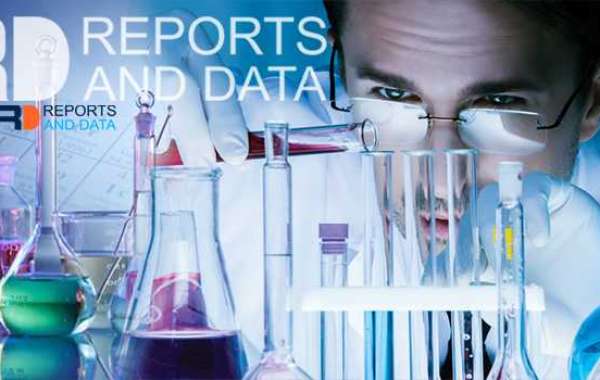Rapid growth in emerging economies and technological development in the Fructosamine diagnostics industry with the advent of portable and battery-operated fructosamine devices is expected to create revenue generation opportunities for manufacturers of fructosamine products. These are the key factors contributing to high CAGR of fructosamine market during the forecast period.
According to the current analysis of Reports and Data, the global Fructosamine market was valued at USD 3.40 billion in 2021 and is expected to reach USD 6.34 billion by the year 2030, at a CAGR of 7.1%. Fructosamine can provide doctors and physicians with valuable information about patient’s health status, including indications of renal, urological and liver disease, diabetes mellitus, urinary tract infection (UTI) and general hydration. Fructosamine can be used to screen for substances that would not usually be expected to be present in urine, for example, glucose, leucocytes, nitrite and blood. If these substances are present, further analysis of urine and/or blood may be required. Although fructosamine is an effective screening tool, it should not be used in isolation to guide treatment because false positives, for example, nitrites, and false negatives, for example, glucose, can occur if the sample is contaminated or left to stand for too long. Fructosamine is an effective screening tool that can be used to detect systemic diseases and infections. There are a variety of methods of collecting urine specimens and it is essential to ensure that contamination is limited to reduce the potential for inaccurate results. Reagent strips are a quick and easy method for testing urine and can provide valuable information about a patient’s condition.
New technological advances have paved the way for significant progress in automated fructosamine. Quantitative reading of urinary test strips using reflectometry has become possible, while complementary metal oxide semiconductor (CMOS) technology has enhanced analytical sensitivity and shown promise in microalbuminuria testing. Microscopy-based urine particle analysis has greatly progressed over the past decades, enabling high throughput in clinical laboratories. Urinary flow cytometry is an alternative for automated microscopy, and more thorough analysis of flow cytometric data has enabled rapid differentiation of urinary microorganisms. Integration of dilution parameters (e.g., creatinine, specific gravity, and conductivity) in urine test strip readers and urine particle flow cytometers enables correction for urinary dilution, which improves result interpretation. Automated fructosamine can be used for urinary tract screening and for diagnosing and monitoring a broad variety of nephrological and urological conditions; newer applications show promising results for early detection of urothelial cancer. Concomitantly, the introduction of matrix-assisted laser desorption ionization-time-of-flight mass spectrometry (MALDI-TOF MS) has enabled fast identification of urinary pathogens. Automation and workflow simplification have led to mechanical integration of test strip readers and particle analysis in fructosamine. Over the past two decades, automated fructosamine has undergone remarkable technical progress. Both microscopy- and flow cytometric-based instruments generate reliable results that are clinically useful, and automated test strip reading provides added value. Additional integration of existing technologies may further reduce turn-around times.
Key companies profiled in the report include
Hoffmann-LA Roche AG, Danaher Corporation, Siemens AG, Sysmex Corporation, Bio-Rad Laboratories, Inc., Mindray Medical International Limited, Acon Laboratories, Inc., Arkray, Inc. and United Medical Electronic Group Co., Ltd.
Request Free Sample Copy (To Understand the Complete Structure of this Report [Summary + TOC])@ https://www.reportsanddata.com/sample-enquiry-form/2229
The report is an investigative study that determines market growth and market scope on the basis of market trends, consumer behavior shifts, consumption and production patterns, product portfolio offered by the market, growth rate, drivers and constraints, financial positions, and existing challenges and limitations of the Fructosamine market.
The report discusses in detail the global production capacity, demand and supply ratio, market dynamics, and comprehensive analysis of the competitive landscape. It provides an industry-wide analysis of the market share of each players along with their business portfolio, production and manufacturing capacity, product portfolio, business expansion plans, financial standing, and strategic alliances such as mergers and acquisitions, joint ventures, and collaborations, among others.
Order this Report @ https://www.reportsanddata.com/report-pricing/2229
The regional bifurcation of the market analyzes key market segments such as North America, Latin America, Europe, Asia Pacific, and Middle East Africa. The report discusses in detail the market growth, market size, revenue growth, market share, production and consumption, demand and supply, current and emerging trends, and technological developments in each region.
The key geographical regions analyzed in the market report are:
- North America (U.S.A., Canada)
- Europe (U.K., Italy, Germany, France, Rest of EU)
- AsiaPacific (India, Japan, China, South Korea, Australia, Rest of APAC)
- Latin America (Chile, Brazil, Argentina, Rest of Latin America)
- Middle East Africa (Saudi Arabia, U.A.E., South Africa, Rest of MEA)
Fructosamine Market Segmentation based on Types:
Application Outlook (Revenue, USD Billion; 2019–2030)
- Urinary Tract Infection (UTI)
- Kidney Disease
- Pregnancy and Fertility
- Diabetes
- Others
Product Type Outlook (Revenue, USD Billion; 2019–2030)
- Consumables
- Instruments
End-use Outlook (Revenue, USD Billion; 2019–2030)
- Hospitals and Clinics
- Academic Research Laboratories
- Diagnostic Laboratories
Further key findings from the report suggest
- Fully automated urine strip readers and automated urine sediment analyzers which includes UriSed mini and UriSed 2 from 77 Elektronika Kft represent the technologically advanced instruments available in the market
- The large number target population and the observed high, unmet clinical needs in under-developed regions provide the market with a large pool of opportunities for potential growth
- In 2019, DIRUI Industrial Co. Ltd. launched the FUS 1000 Automated Urine Analyzer.
- Automated and semi-automated biochemical urine analyzers, urine sediment analyzers, and microscopic urine analyzers are the widely used instruments in the fructosamine market
- The rising prevalence of target diseases including diabetes, kidney diseases, and Urinary Tract Infections and the introduction of technologically advanced, rapid, non-invasive, and user-friendly tools for fructosamine are expected to drive growth of this market
- North America is dominating the market, with the highest market share of 30.7% in 2019. The U.S. contributed the largest revenue share to the North American as well as global fructosamine market
- The Sediment fructosamine segment is expected to show significant CAGR during the forecast period
Request a customization on the report @ https://www.reportsanddata.com/request-customization-form/2229
Thank you for reading our report. For further inquiry or query about customization, kindly get in touch with us to know more. Our team will clear your doubts and ensure the report is customized to meet your requirements.
Explore More Industry Research by Reports and Data:
Extracorporeal Membrane Oxygenation (ECMO) Market @ https://cse.google.co.uz/url?q=https://www.biospace.com/article/extracorporeal-membrane-oxygenation-ecmo-market-is-expected-to-reach-usd-385-9-million-by-2028-at-a-cagr-of-3-6-percent-/
Craniomaxillofacial Implants Market @ https://cse.google.co.uz/url?q=https://www.biospace.com/article/craniomaxillofacial-implants-market-is-expected-to-reach-usd-3-29-billion-by-2026-at-a-cagr-of-6-8-percent-/
About Reports and Data
Reports and Data is a market research and consulting company that provides syndicated research reports, customized research reports, and consulting services. Our solutions purely focus on your purpose to locate, target and analyze consumer behavior shifts across demographics, across industries and help client’s make a smarter business decision. We offer market intelligence studies ensuring relevant and fact-based research across a multiple industries including Healthcare, Technology, Chemicals, Power and Energy. We consistently update our research offerings to ensure our clients are aware about the latest trends existent in the market. Reports and Data has a strong base of experienced analysts from varied areas of expertise.
Contact Us:
John W
Head of Business Development
Reports and Data | Web: www.reportsanddata.com
Direct Line: +1-212-710-1370
E-mail: sales@reportsanddata.com








